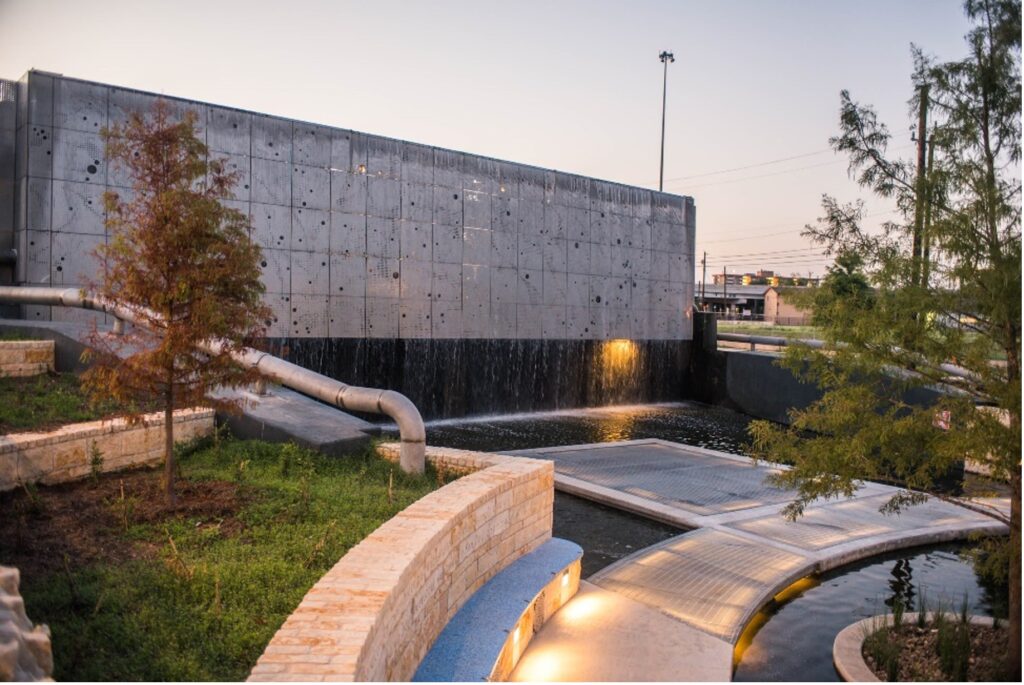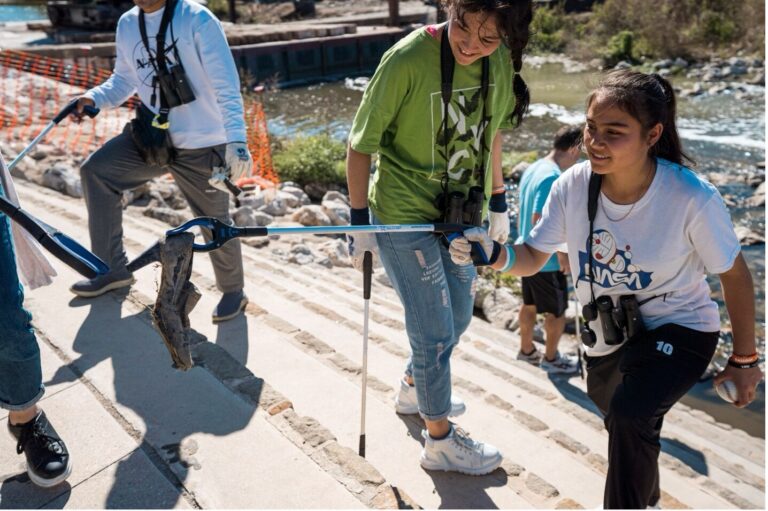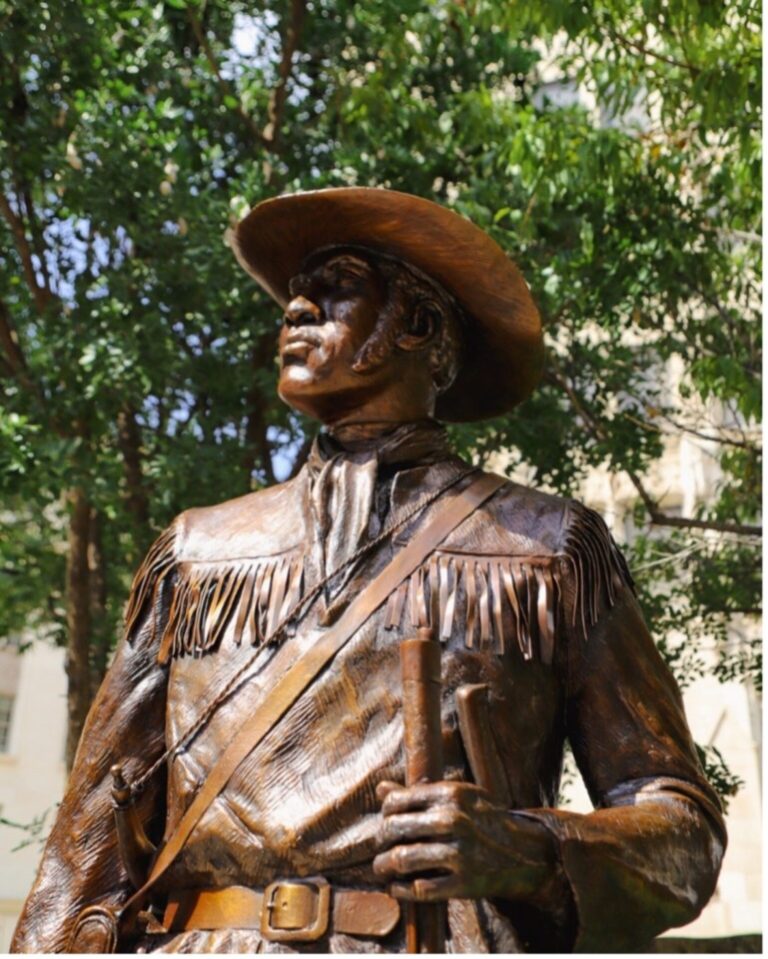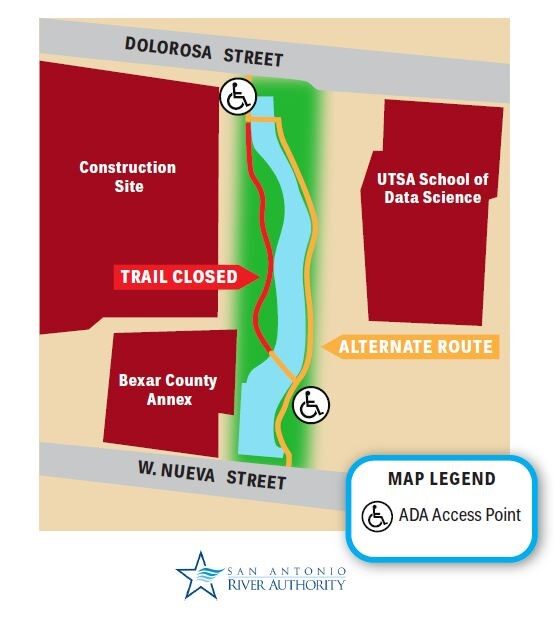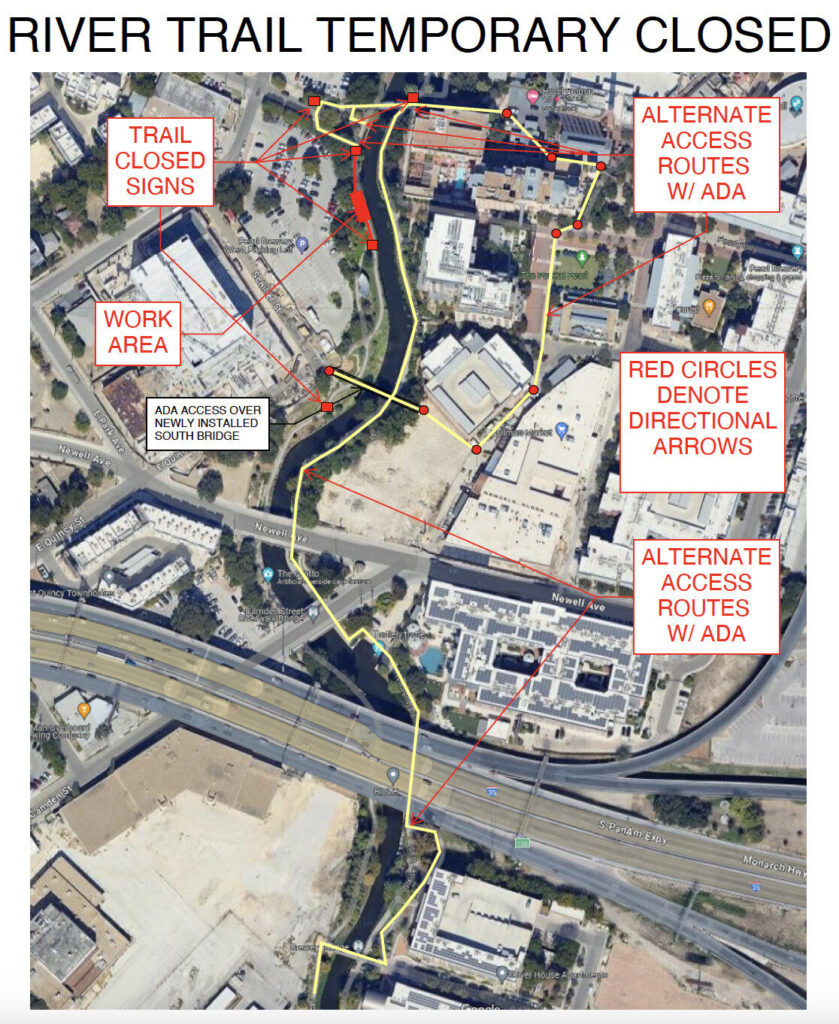Last Updated on January 30, 2024
Did you know that many of the River Authority’s beautification projects, like San Pedro Creek Culture Park (SPC), also help protect against flooding? In addition to the inclusion of stunning artwork throughout the park, this project also serves as flood control for the city and county, its people, and everything they hold dear.
What is San Pedro Creek Culture Park?
San Pedro Creek can be considered the city’s birthplace, for it was here that the first dwellers and future generations of indigenous peoples and settlers founded what would become San Antonio. This historic creek became the location where the convergence of civilizations in our community took root and evolved. However, over the years, this vital water source and ecosystem were swallowed by progress and largely forgotten by many residents.
In the early 2000s, with a better understanding of how the small but mighty creek played an essential role in flood mitigation efforts, the renovation and rejuvenation of San Pedro Creek took shape. Thus, SPC—a hard-working stretch of the original waterway that serves as not only an enrichment space but a flood control, water quality, and ecosystem restoration project—was born. SPC is a multi-phased and multi-year joint project of Bexar County, the River Authority, and the City of San Antonio.
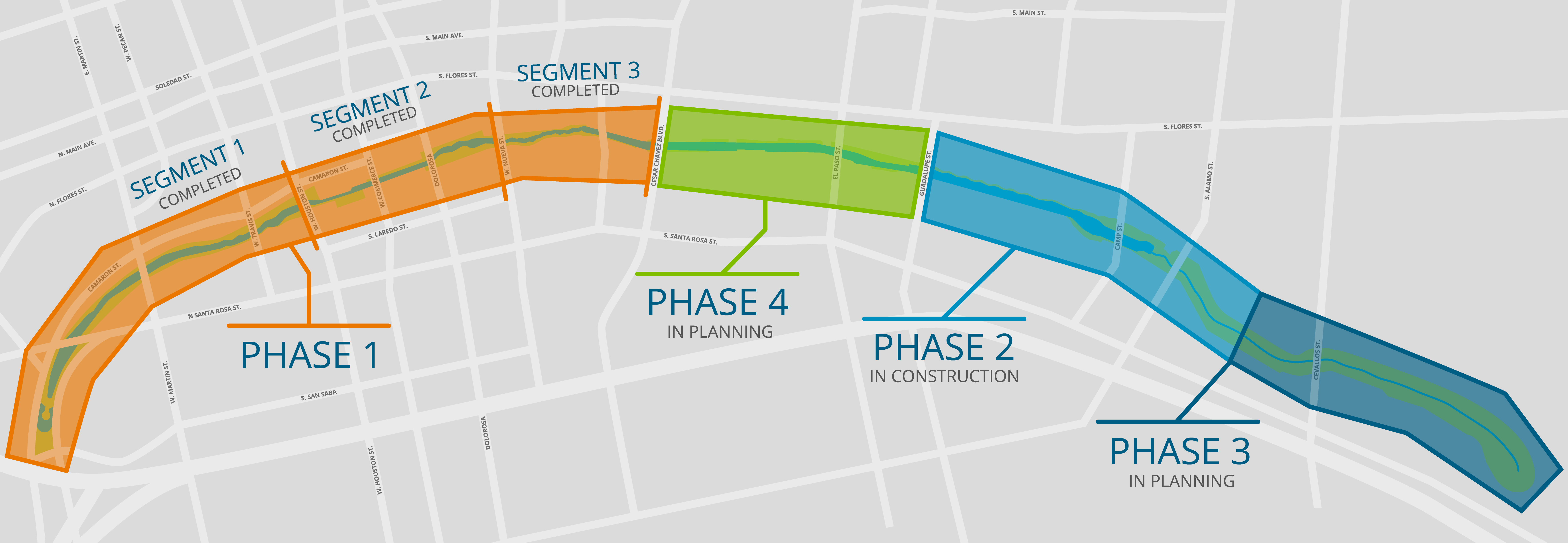
The completed SPC will encompass a total of four phases. Phase 1 was completed and celebrated with the community in the Fall of 2022. The subsequent three phases (with the exception of Phase 4.2) are scheduled for completion by 2024. In total, construction on SPC will add more than 60 thousand linear feet of new walls and replace eight street bridges while adding 4 miles of walking trails and 11 acres of landscaping.
How does this project mitigate flooding and improve water quality?
The construction of SPC will help move people and property out of harm’s way by removing 30 acres and 38 structures from the 100-year floodplain, safely conveying floodwaters within the San Pedro Creek banks. The project will also increase channel capacity by widening and deepening the existing channel, replacing constraining bridges, and including three new crest gates.
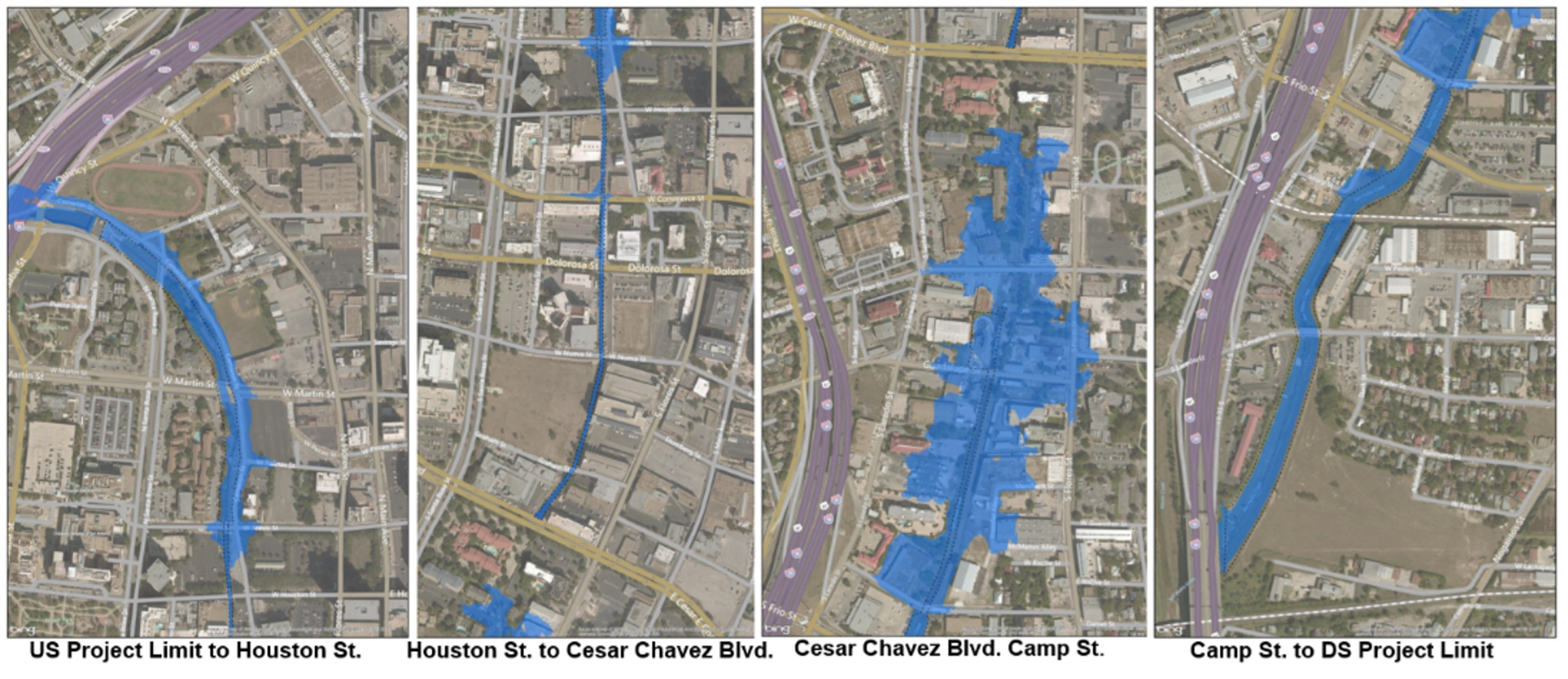
Floodplain impact before construction of SPC.
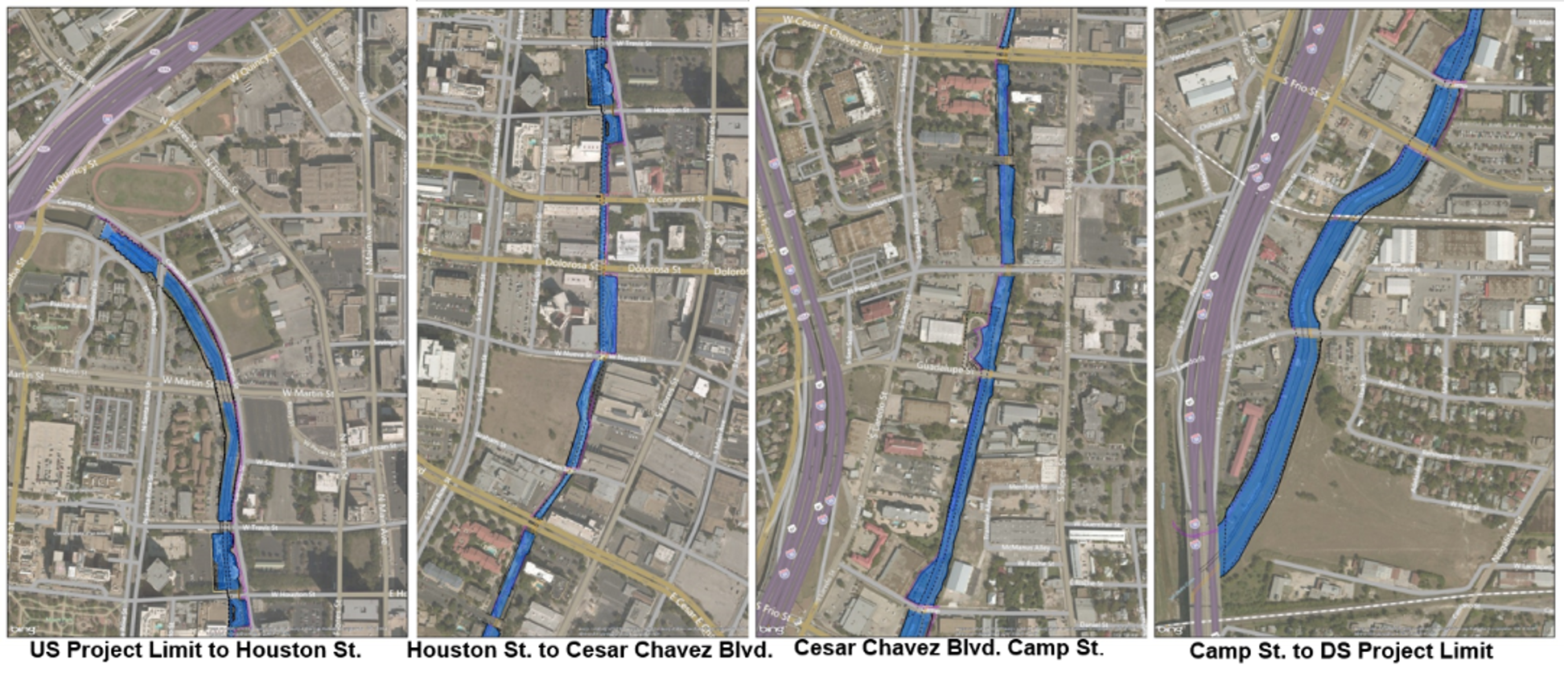
Floodplain impact after construction of SPC.
SPC also contains eight bioswales that slow down and filter stormwater runoff to prevent flooding and pollution, as well as six trash collector systems that separate and trap trash, debris, sediment and hydrocarbons from runoff.
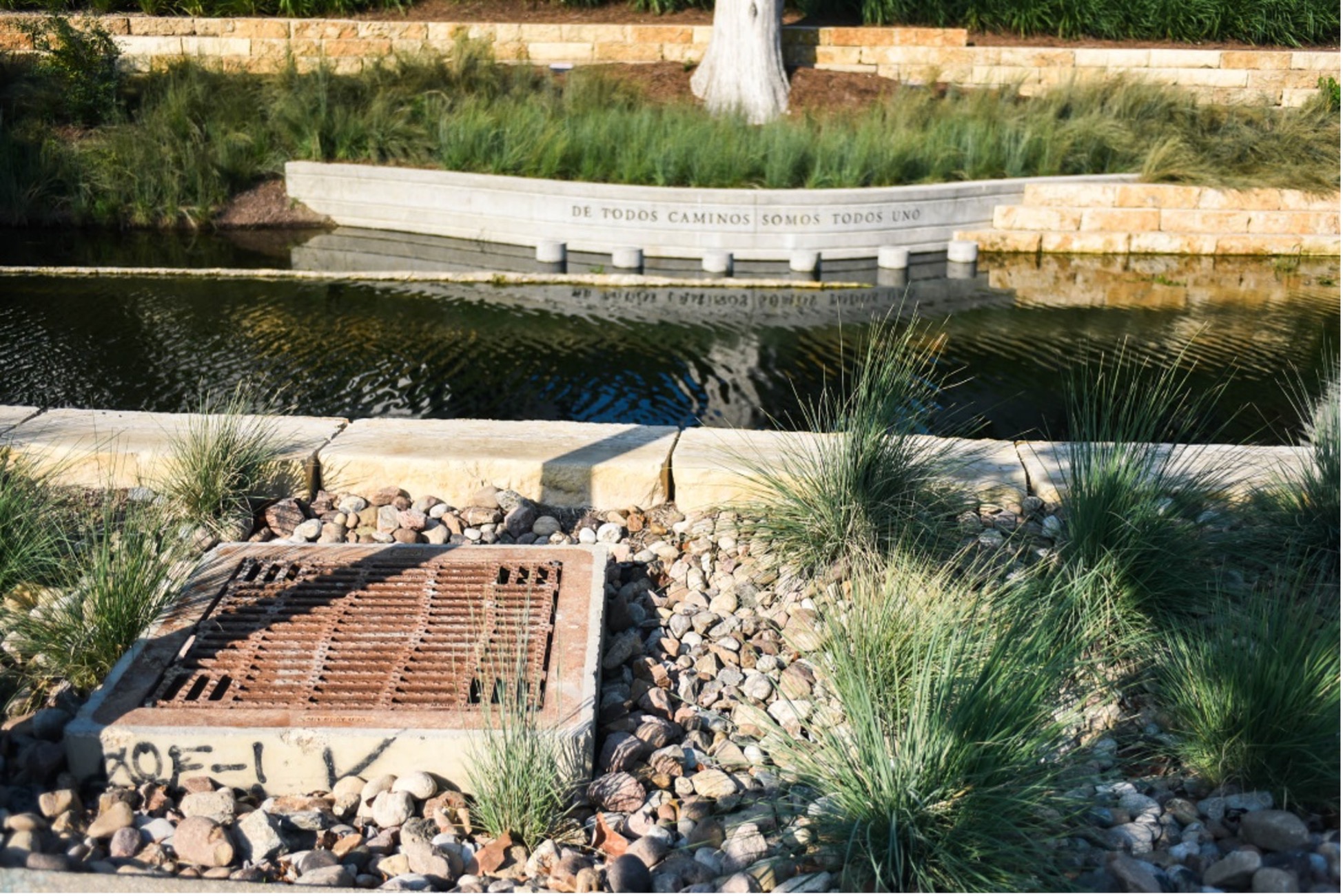
A bioswale is a specially landscaped stormwater feature that soaks up and filters stormwater runoff from hard surfaces such as roofs, pavement, and parking lots. Bioswales are constructed with quick-draining soil and drainage layers to filter and clean stormwater and make it healthy and usable for the creek’s flora and fauna. In turn, the native plants provide water quality and wildlife benefits. All the bioswales along San Pedro Creek receive stormwater runoff from city streets, pavement, and parking lots.
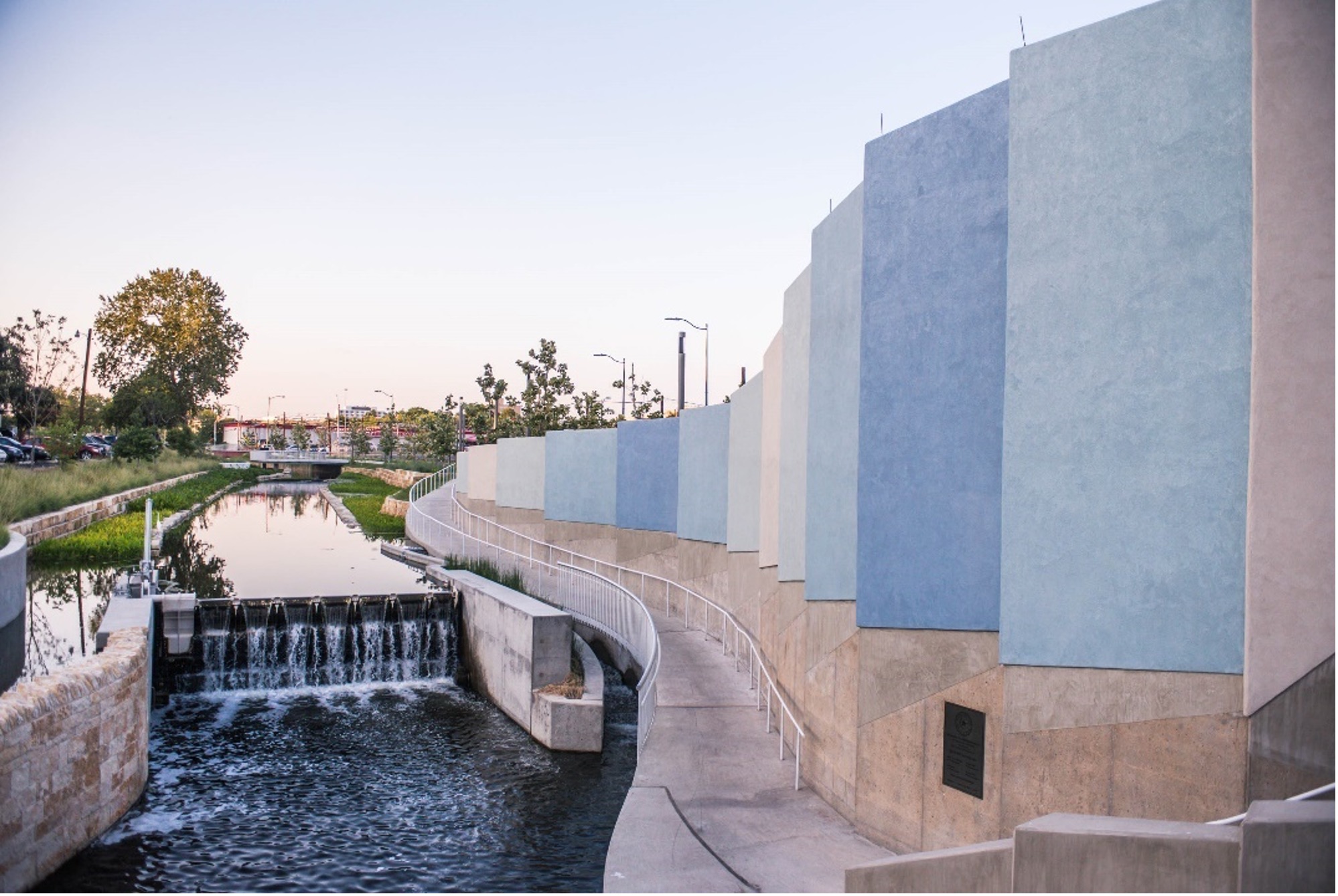
Stormwater interceptors are specialized mechanical devices installed at some of the stormwater inlets. Their job is to capture floating trash and debris before it gets into the creek. They do this by using hydrodynamic force to spin the stormwater entering the unit and trap the litter and other pollution with a combination of screens and chambers before allowing the rest of the water through. Think of how a salad spinner forces water off freshly washed lettuce leaves! Watch one of the units in action.
Did you know that some art installations also help mitigate flooding?
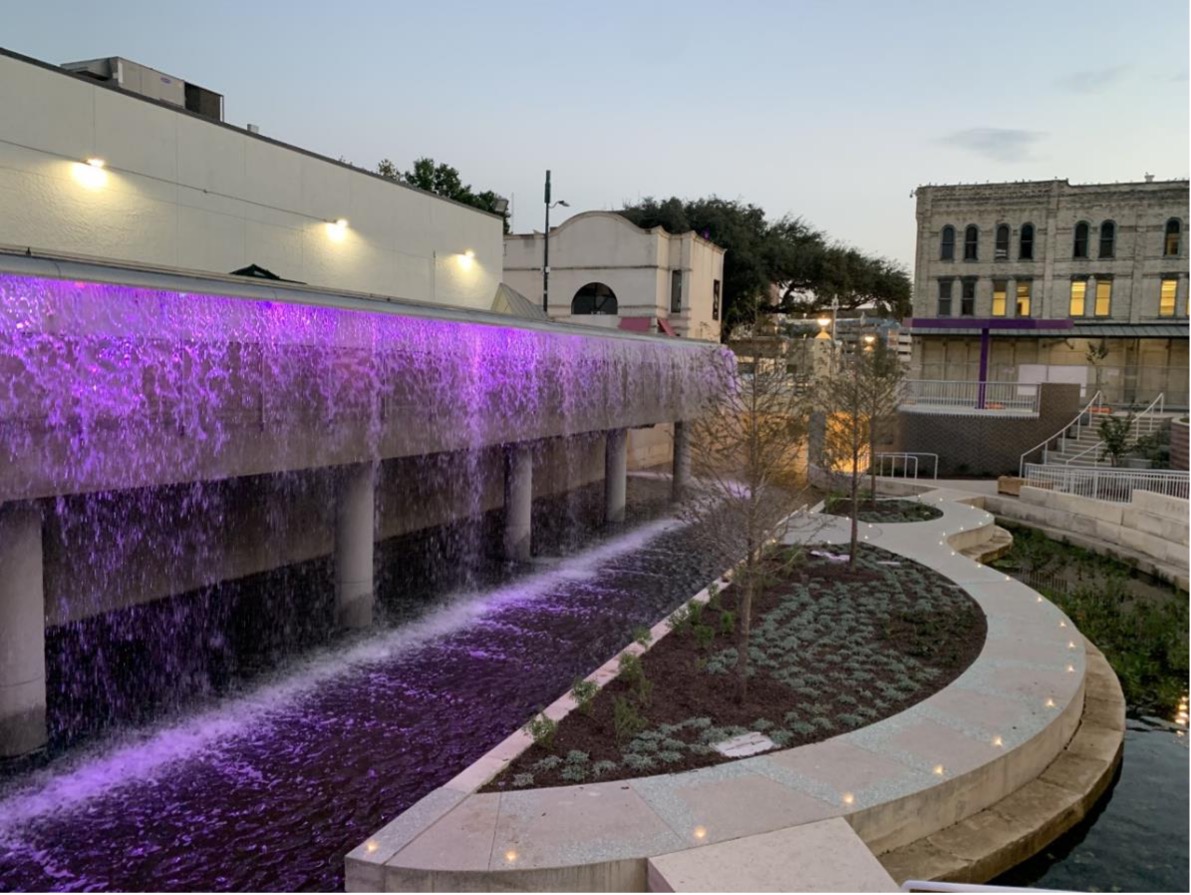
For example, the 250-foot waterfall of STREAM is not only a dazzling light display, but it also helps to slow the velocity of water as it travels down San Pedro Creek.
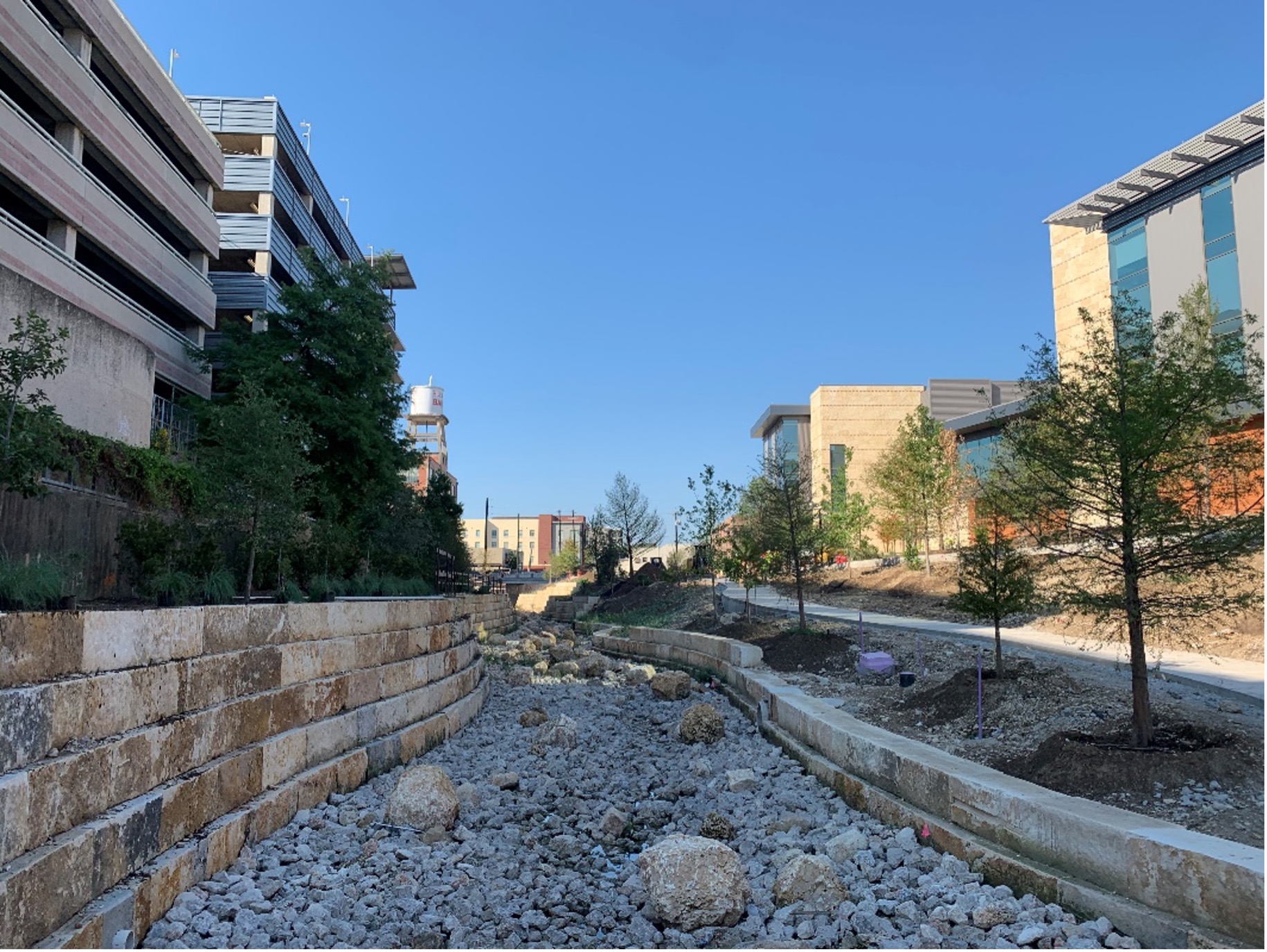
Think these rocks in the creek are there just for aesthetics? Think again! Their primary purpose is to help slow the flow of water in the stream and mitigate flooding.
When the four phases are completed, the San Pedro Creek Culture Park will span 2.2 miles through downtown, beginning at the flood tunnel inlet at Santa Rosa Street and ending at the confluence of the Alazán and Apache Creeks at IH-35 to the south.
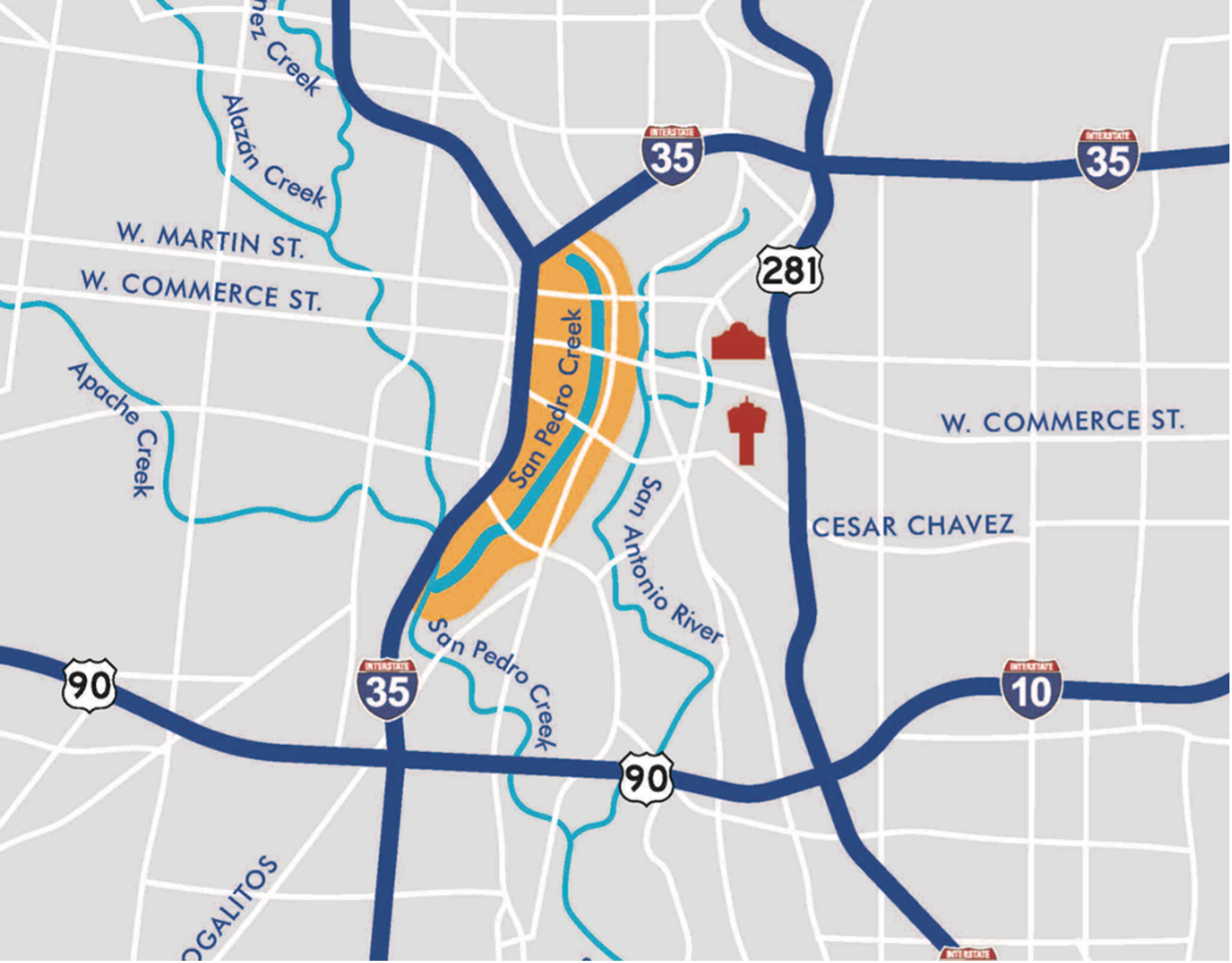
This multi-phased, joint project among Bexar County, the San Antonio River Authority and the City of San Antonio has transformed the San Pedro Creek into a world-class linear park, brimming with public art, honoring the creek’s history and importance to the region, and creating a destination space in the heart of San Antonio.

